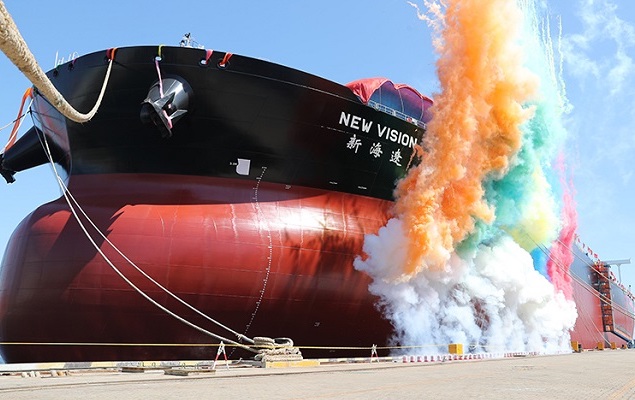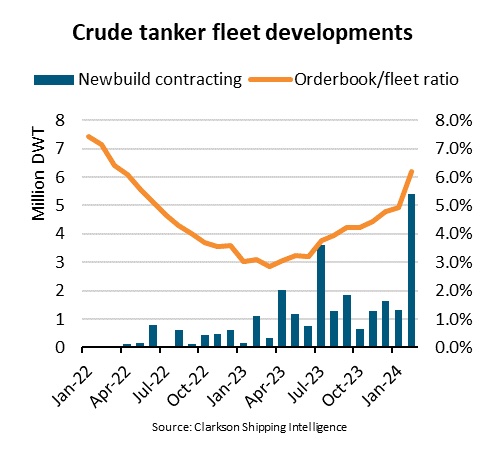
In the first two months of 2024, crude tanker newbuild contracting surged to 7.4 m dwt, a 490% leap year-on-year, due to a rise in orders for VLCCs, according to data from shipping organisation BIMCO. A notable 19 VLCCs were ordered in the first two months of the year, already surpassing the number of orders for this ship type during all of 2023.
In March 2023, the crude tanker orderbook accounted for only 3.3% of the crude tanker fleet, the lowest point since at least 1996. However, during 2023, orders for suezmax ships rapidly increased and orders for VLCCs have followed. By February 2024, the crude tanker orderbook to fleet ratio had risen to 6.2%. Despite the high rate of contracting, the orderbook to fleet ratio for VLCCs remained at just 4.3%
With one of the smallest orderbooks of all sectors and only a handful of VLCCs delivering this and next year, many high-profile shipowners, including Fredriksen, Marinakis, Troim and the Saverys family, have jumped on available newbuilding slots.
Among the headline grabbing orders, commodities trader Trafigura has just ordered its first VLCC newbuilds at a yard in China, Jiangsu New Hantong Ship Heavy Industry, which to date has yet to build a VLCC.
“VLCC fleet profile statistics have long looked enticing, with a meagre orderbook of 5% of current (and rapidly ageing) fleet, but whereas 2023 saw piecemeal ordering, rapidly increasing second-hand pricing this quarter has spurred owners to heed the call to action across the board to book berths while they’re hot,” noted a recent report from broker Gibson.

